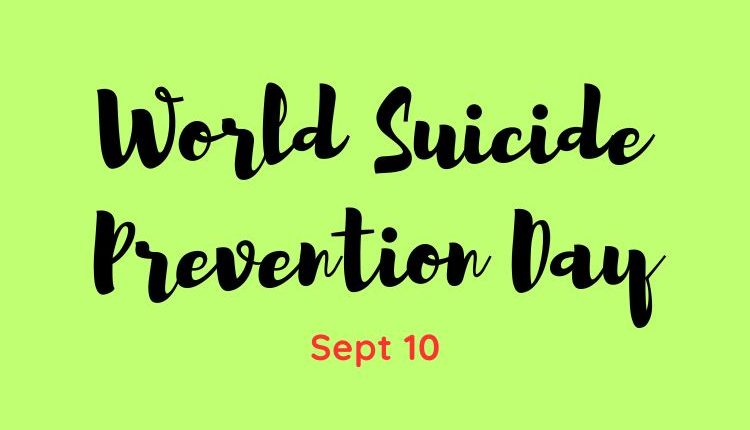Suicide is a serious concern; studies shows that mental health issues often begin during adolescence. Parents, guardian at home, localities and schools play a pivotal role in identifying and supporting students who might be struggling.
Suicide and suicidal ideation are complex phenomena rooted in a variety of psychological, emotional, and social factors. Identifying and comprehending the underlying psyche would provide valuable insights into prevention and intervention.
The importance of addressing mental health and suicide prevention among students is highly evident. Academic pressures, social dynamics, and personal challenges impact a student’s emotional well-being. It’s important to address and identify these issues and foster a supportive environment that promotes healthy mental well-being. Educators and counsellors must be trained to recognise the below mentioned warning signs such as drastic changes in behaviour, or expressions of hopelessness, withdrawal. Early identification and intervention can be key in preventing crises.
Understanding the psyche behind suicide and suicidal ideation involves recognising the intricate interplay of emotional pain, cognitive distortions, social isolation, and mental health disorders.
- Emotional Pain and Hopelessness
Suicidal ideation is often due to profound emotional pain and a deep, core sense of hopelessness. Individuals experience overwhelming feelings of sadness, worthlessness or despair. This emotional pain distorts person’s thinking, making it difficult to see possibility of relief or improvement for individuals. They might perceive their situation as inescapable and would believe that death is the ultimate solution for their suffering.
- Cognitive Distortions
Suicidal thoughts are usually accompanied by cognitive distortions, which are irrational ways of thinking. People experiencing these thoughts may engage in black-and-white thinking, seeing situations in extremes — either everything is awful, or everything is wonderful, having no middle ground. Distorted thinking can amplify feelings of hopelessness and despair and reinforces the idea of suicide that there is no way out left.
- Social Isolation and Loneliness
Another significant factor in suicidal ideation is social isolation. Individuals feeling disconnected from others or believe they lack meaningful relationships are more prone. Loneliness can aggravate feelings of despair and can lead to a sense or thought of being a burden to others, further feeding to suicidal thoughts.
- Lack of Coping Mechanisms
People who experience suicidal ideation often struggle with inadequate coping mechanisms. They may lack effective strategies for managing stress, handling emotional turmoil or solving problems. This inability to cope with life’s challenges can contribute to feelings of being overwhelmed and helpless.
YOU MAY LIKE TO READ: Five ways working parents can help their children develop better
- Mental Health Disorders
At times mental health conditions such as depression, anxiety and bipolar disorder contributes to suicidal ideation. These disorders alter brain chemistry and increase the intensity of feelings of hopelessness and despair. It is crucial to address these conditions and interventions in addressing the underlying issues that contribute to suicidal thoughts.
- Trauma and Stress
Past trauma and high stress level along with maladaptive coping skills plays an influential role in suicidal ideation. Experiencing or witnessing traumatic events deeply affects an individual’s mental health, heightened vulnerability to suicidal thoughts.
Students are vital resources for us and hence it’s our moral responsibility to provide an empathetic, safe and compassionate environment for our children to grow. It’s important to create a culture of openness. Encourage students to talk freely about their feelings. This would reduce the stigma surrounding mental health issues and make it easier for them to seek support.
Furthermore, fostering a supportive peer environment would be beneficial. Peer-led initiatives and support groups can provide students with a sense of community and understanding.
READ ALSO: Seven ways to stop worrying about exams
Parents play a crucial role in suicide prevention. Have open communication at home and foster an empathetic, non-judgemental environment at home. Remain attached with your child emotionally and in qualitative manner. This would help parents support their children effectively.
In summary, a proactive approach involving education, support systems, and open communication can significantly impact suicide prevention and mental health among students. By working together, schools, families, and communities can create a safer and more supportive environment for all students.
This article is written by Sonal Srivastava, Psychologist
DISCLAIMER: Views expressed above are that of the author and do not reflect the views of the website. The Peeper Times does not assume any responsibility or liability for the same.
Do you feel strongly about something? Have a story to share? Write to us at info@thepeepertimes.com or connect with us on Facebook or LinkedIn or X (Twitter)




Comments are closed, but trackbacks and pingbacks are open.